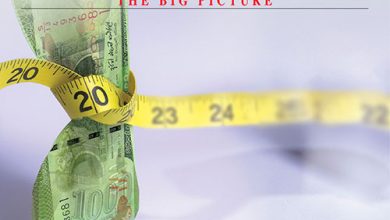FAKE IT ON THE NET
Deepfakes that put the internet on notice
BY Angelo Fernando
A popular saying and several memes declare how ‘on the internet, you can be anyone.’ That sentiment comes in many flavours – viz. roleplaying, impersonation, predatory behaviour and plain idiocy. But impersonation has quickly become the dominant artificial extract of the online world and is jeopardising perfectly legitimate operations – for both businesses and individuals.

And it’s not only identity theft, which often turns into elaborate scams. Suddenly, being able to produce and distribute fakes on the internet is upending the space that used to be underwritten by trust. But before we get paranoid, it’s good to put things in context…
The year was 1938. And the ‘networks’ at that time were wrestling with a similar problem. A 39-year-old journalist had managed to take on the persona of a Nazi insider, much to the consternation of Adolf Hitler’s inner circle.
Peter Seckelmann, an exile from Berlin, took to radio (the dominant communications network to which everyone seemed glued at the time) and started berating Hitler’s deputy Rudolf Hess and others, casting the Nazis in bad light. The Gestapo, which tightly controlled information flowing out of Germany, desperately searched for the radio transmitter in the country… to no avail.
The German secret police knew that anyone who controlled the airways could influence how people viewed the Nazi party. This broadcaster seemed like an insider and had to be taken out. But Seckelmann was anonymous and invisible, and broadcasting from a secret location in England.
Fast forward to 30 years after the World Wide Web began and where media is using the internet as a gigantic global transmitter…
But the same spaces are becoming hiding places for those who live behind digital masks. At one end of the spectrum is spoofing or the use of fake sites (with realistic looking domain names). The fake URLs are cloaked so that a visitor believes he or she is visiting the real thing. This is dangerous because someone could log into a bank account and access sensitive information.
But it goes deeper than that…
An alarming technology called ‘deepfake’ has the capacity for someone to doctor a video of a person and make it seem real. It uses a combination of AI and image manipulation, and inserts a cloned voice of a person onto actual footage of him or her.
This kind of photorealistic video editing (digitally inserting actors into scenes) was once the skill set in Hollywood. Remember the movie Forrest Gump where the eponymous hero shakes hands with President John F. Kennedy? That was achieved by using a green screen, sensors and fine editing to sandwich Tom Hanks’ hand motion into a video.
But deepfakes have bypassed the green screen era…
Recently, a video surfaced of Facebook founder Mark Zuckerberg, which had been manipulated to make him say something on camera that he never did.
It was a prank to force Facebook to react and take down the ‘fake’ video – and set a policy for all fake videos on its network.
The makers of the deepfake video were drawing our attention to the danger of this technology. “Imagine this for a second: one man with total control of billions of people’s stolen data, all their secrets, their lives, their futures,” the faux Zuckerberg says in the video, adding: “I owe it all to Spectre. Spectre showed me that whoever controls the data controls the future.”
Zuckerberg never said this, of course!
But is it that scary? Should you care? After all, not everyone is directly tied to the spread of false information on the internet…
Well, consider this: deepfake technology could be used to create a PR crisis for an organisation and undermine the value of its stock – if for instance, a video surfaced of a senior official saying something he never did. Given the fact that even world leaders are sometimes caught on camera saying things that are out of character, a deepfake video could spark a diplomatic crisis or even war.
The bad news is that technology is here. Last year, Carnegie Mellon University announced that its researchers had come up with a data driven technique “to automatically transform the content of one video into the style of another, making it possible to transfer the facial expressions.”
Deepfakes could exacerbate deception that takes place regularly…
Following the Easter Sunday attacks in Sri Lanka, photos of funerals carelessly taken from an earlier tragedy were spread via social media. Soon, the preponderance of inaccurate news could undermine our willingness to trust any news.
However, there is hope…
A media forensics approach adopted by DARPA is looking at “technologies for the automated assessment of the integrity of an image or video.” And what is DARPA? It’s a US facility called the Defense Advanced Research Projects Agency, which developed communication protocols that gave rise to the internet in the early 1970s.
No one knows the underpinnings of the internet better than DARPA and perhaps it can unmask those who might wreck it.






